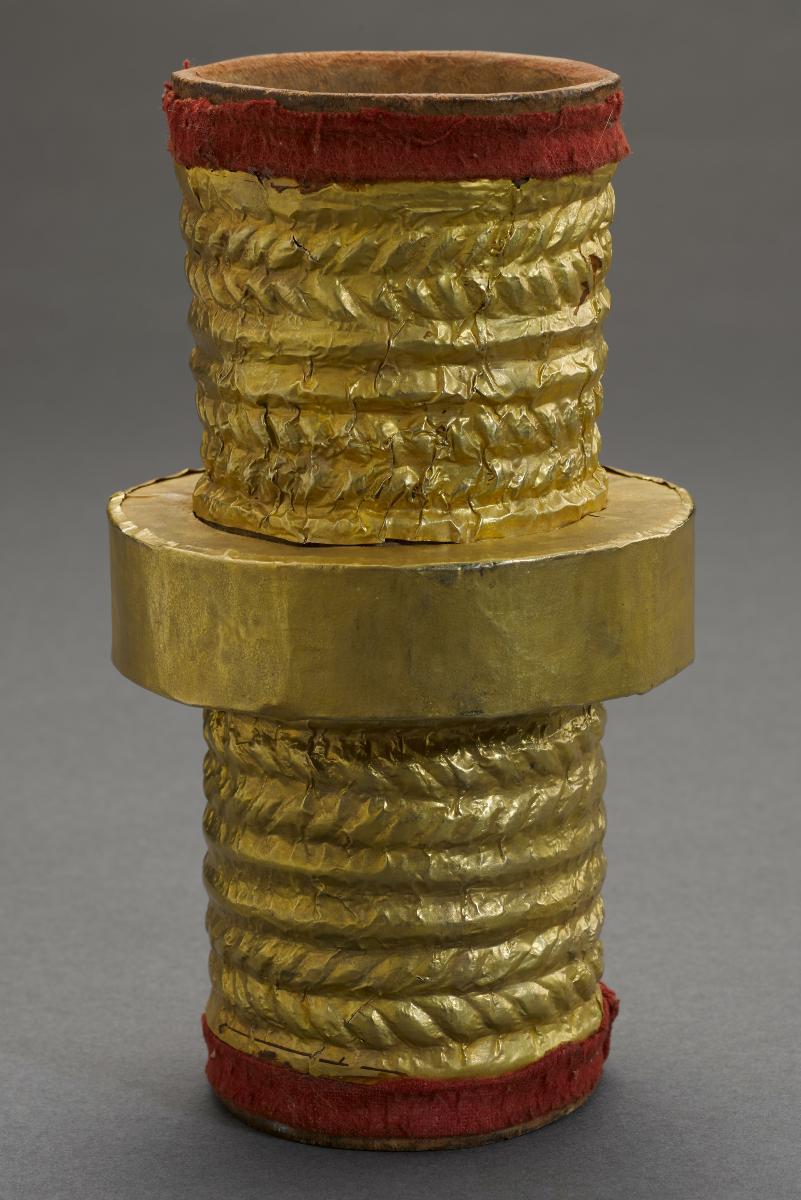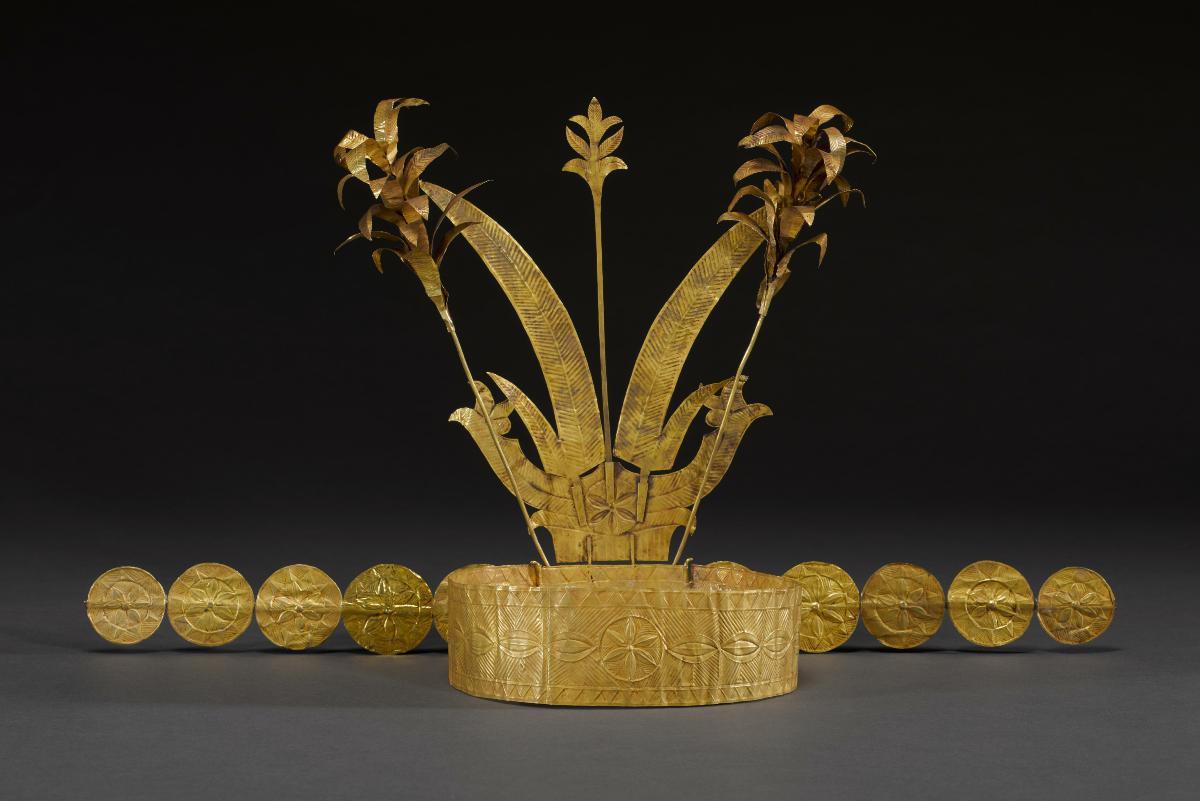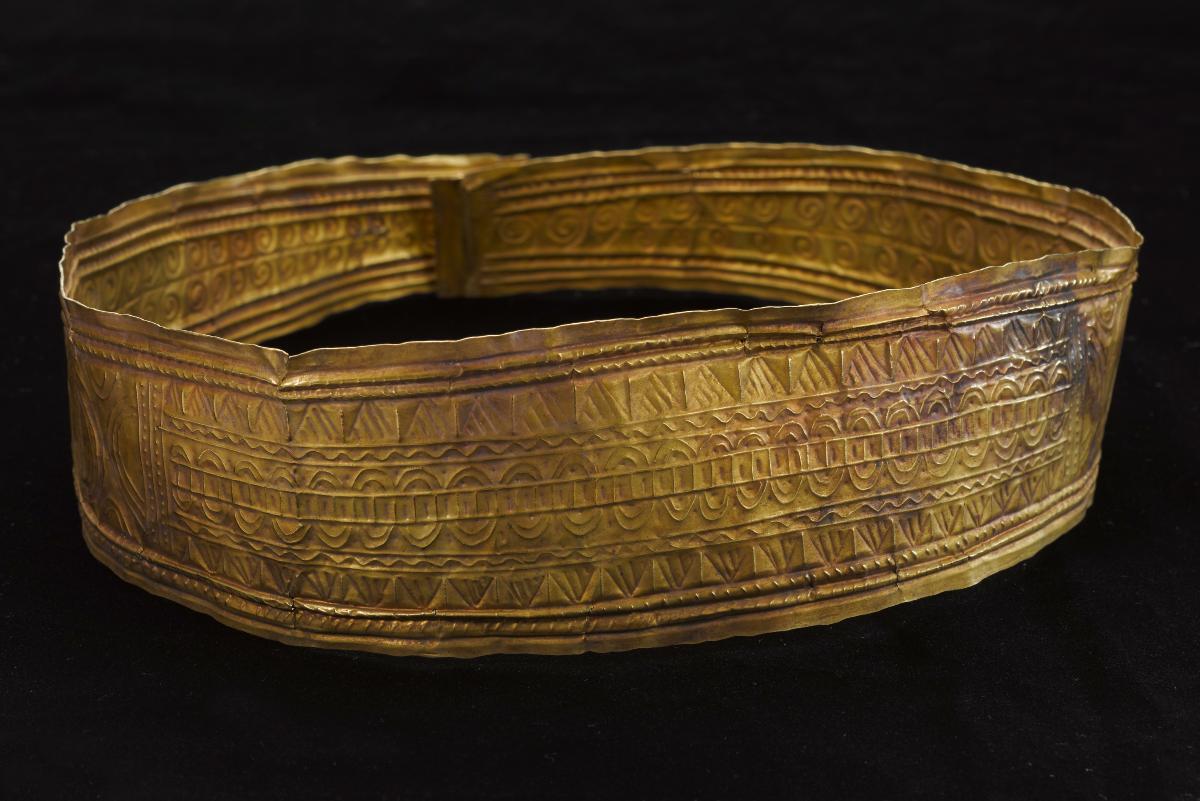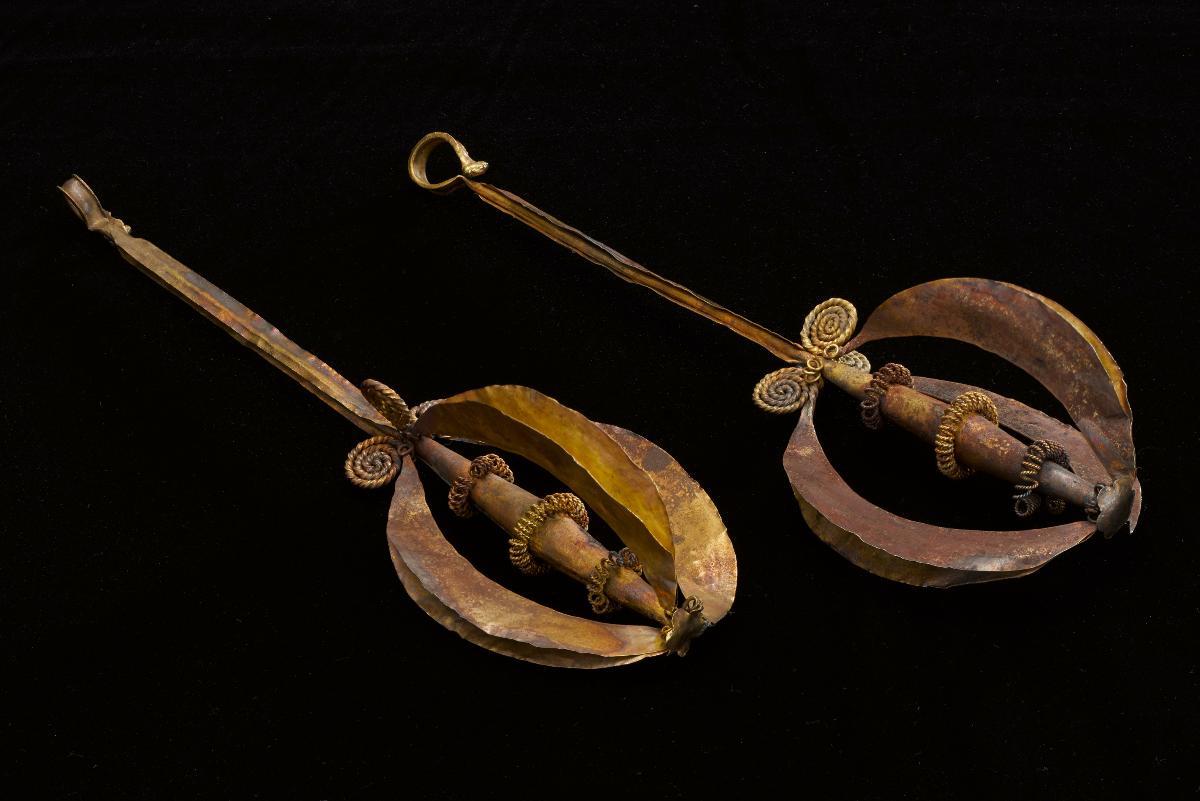This ensemble recreates what was worn by a priestess in the South Nias village of Bawomataluo. The stunning abundance of gold jewellery from the tiny island of Nias, off the Sumatran coast, is all the more amazing given the fact that there are no local sources of the metal. The use of gold is a direct result of the Nias people’s trading of, primarily, human slaves; first with the Malay maritime communities on the Sumatran coast and later, in the 19th century, with the Dutch. Prior to this other materials such as leaves and wood were possibly used. The organic origins of these ornaments can be seen in their plant-like forms, which have been retained in the transition to gold. Making the most of limitations, local smiths beat the gold almost paper thin to fashion extraordinary objects like this ensemble. The gold jewellery worn by Nias women indicated their rank. While most adopted their husbands’ status, some exceptional women had priestly roles and, thus, had the privilege of wearing gold ornaments like this set.Nias society was highly stratified, and the noble families that dominated political life on the island competed intensely with one another through warfare and elaborate feasts. Gold symbolised nobility and instilled both desire and fear. The great power of the sacred gold ornaments could only be harnessed through ritual sacrifices of human slaves. The head of a slave would be buried at the base of a stake on which gold ornaments, such as these, would be hung during their ritual consecration.















